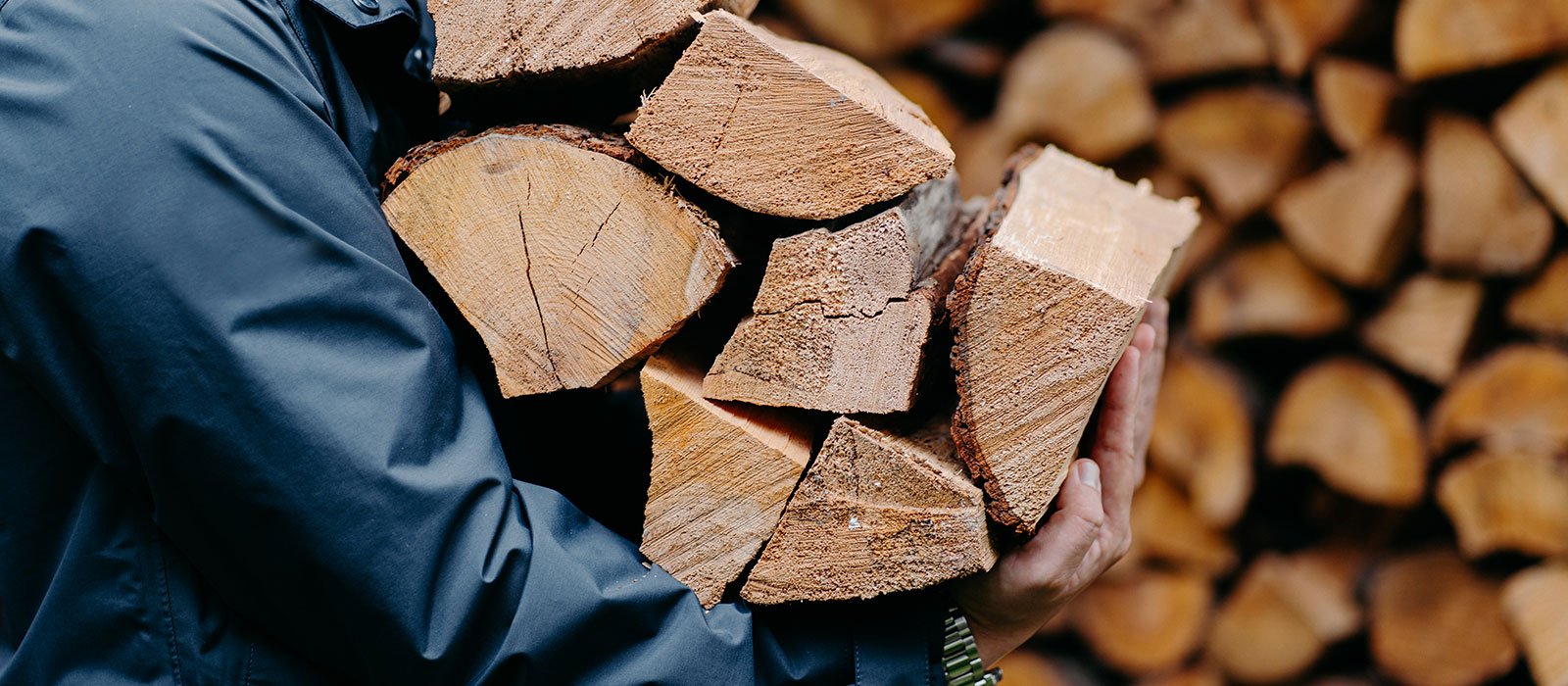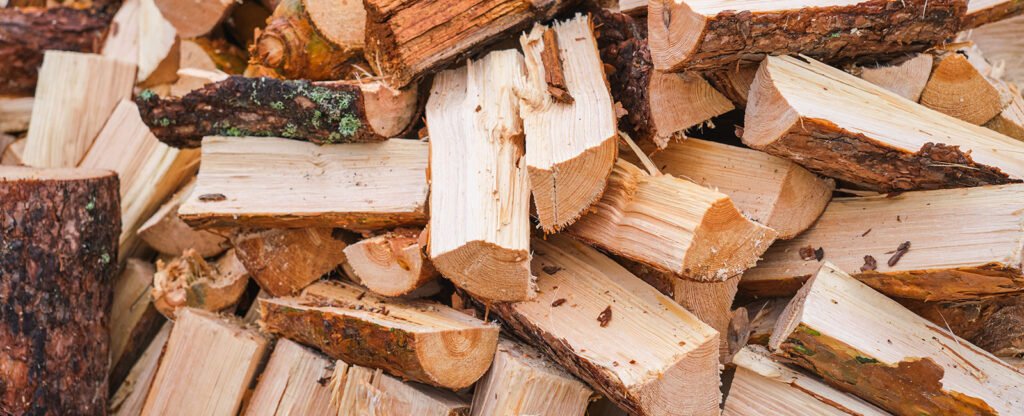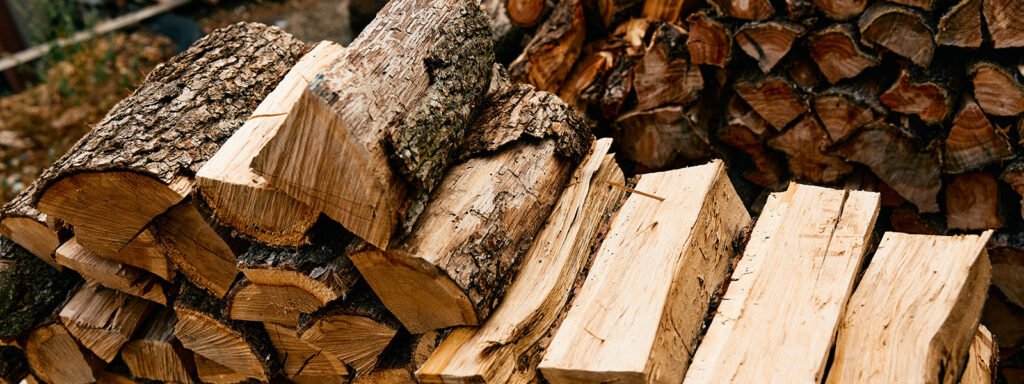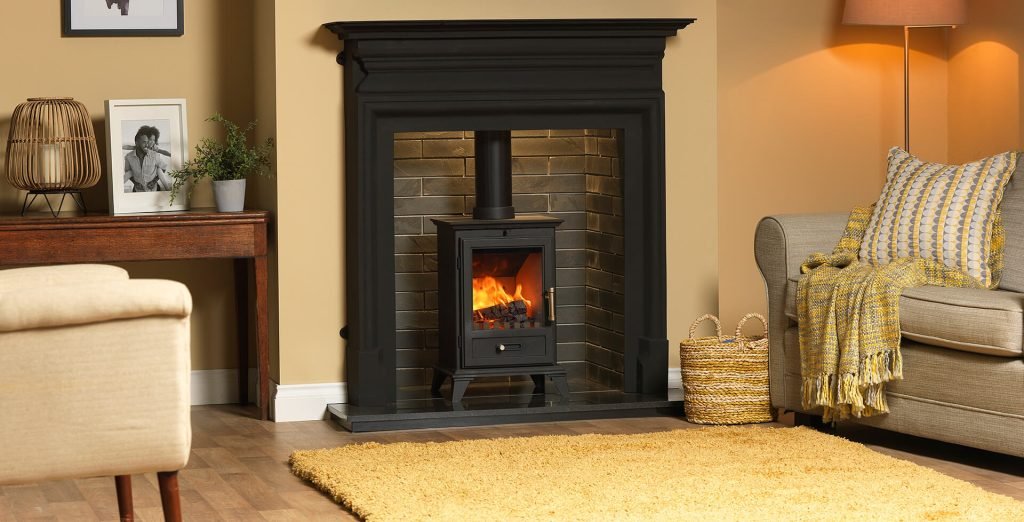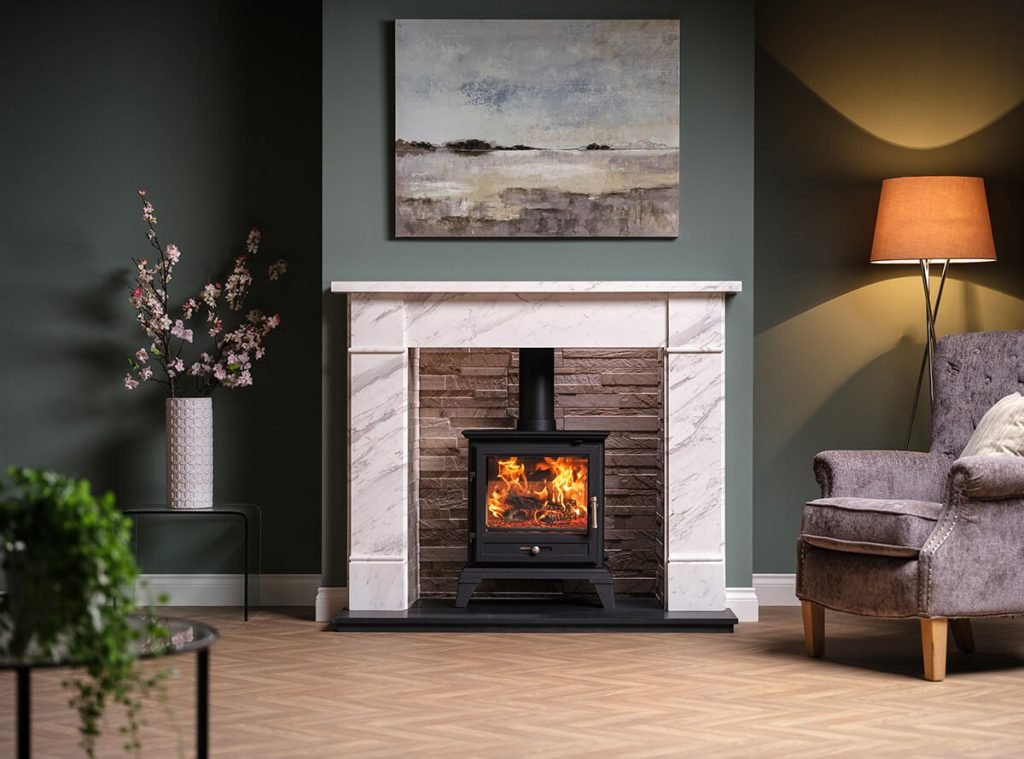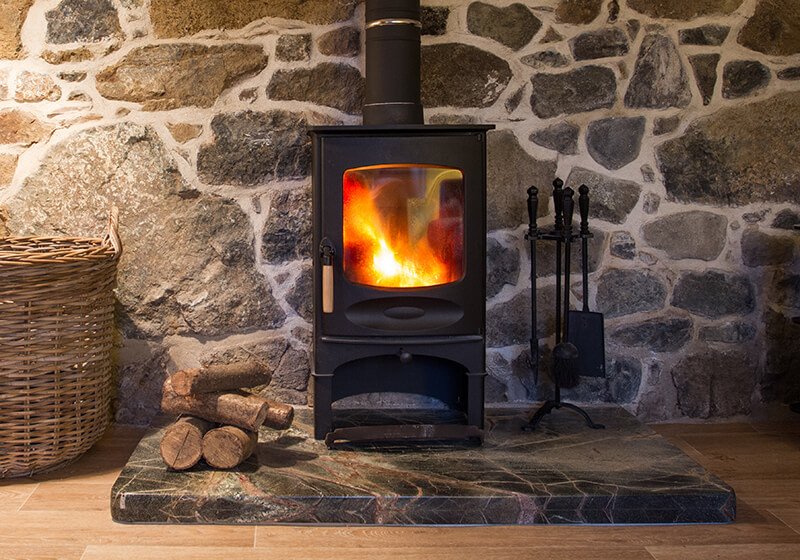Table of contents:
Top 5 Firewood Mistakes Most UK Homeowners Make (And How to Fix Them)
Burning wood in a stove or fireplace might seem straightforward, but there’s more science behind it than most people realise.
From storage to selection, the way you handle your firewood can make a big difference to your stove’s performance, your chimney’s safety, and your home’s air quality.
Here are the five most common firewood mistakes UK homeowners make.. and simple ways to fix them.
1. Burning unseasoned or damp wood
This is by far the biggest mistake. Freshly cut logs (often called “green wood”) can contain over 50 per cent moisture. When burned, this moisture turns to steam, wasting energy that should be producing heat. It also causes thick smoke, blackened stove glass, and creosote buildup in your chimney.
How to fix it:
Use seasoned wood that has been dried for at least 12 months and has a moisture content below 20 per cent. You can check this easily with a handheld moisture meter.
If you’re unsure how to prepare your own supply, read our guide on What Is Seasoned Firewood? A Beginner’s Guide to Wood Drying . It explains how to season logs correctly and spot when they’re ready to burn.
And if you’ve been burning damp logs recently, book a professional chimney sweeping service to clear away any creosote buildup before lighting your next fire.
2. Storing firewood incorrectly
Even the best logs will become damp if they’re stored poorly. Many homeowners leave their firewood on bare ground or cover it completely with a plastic sheet. Unfortunately, both methods trap moisture rather than preventing it.
How to fix it:
Store firewood off the ground on a raised rack, pallet, or slatted floor. Keep your wood in a location with good airflow and cover the top only, not the sides.
We’ve written a full seasonal guide on How to Store Firewood Correctly that shows how to stack, protect, and rotate your logs throughout the year — especially helpful in the UK’s damp winters.
3. Mixing softwoods and hardwoods incorrectly
Both types of wood have their strengths, but using them the wrong way can affect your fire’s quality.
Softwoods like pine, spruce, and fir light easily and are great for starting a fire but burn quickly and produce more resin. Hardwoods like oak, ash, and beech burn slower and hotter, but take longer to catch.
How to fix it:
Use softwoods for kindling and hardwoods for maintaining heat once your fire is established.
If you want the best balance, try mixing the two — softwoods for ignition and hardwoods for steady warmth.
Our Best Wood for Log Burners article explains which wood species burn cleanest and give the longest-lasting heat.
4. Neglecting chimney and stove maintenance
Many homeowners assume that if their stove seems to work fine, it doesn’t need servicing. However, residue from burning wood can accumulate inside the flue and restrict airflow.
This buildup not only reduces efficiency but can also increase the risk of chimney fires.
How to fix it:
Have your chimney swept at least once a year, ideally before the heating season begins. This clears soot, ash, and tar deposits, allowing smoke to exit freely. If your stove glass darkens quickly or your fire struggles to draw, these are early warning signs that your chimney may need cleaning.
Learn more about our professional chimney sweeping services to keep your system safe and performing at its best.
And if your stove is older or poorly installed, it might not be operating as efficiently as it could. Our team at Flue & Flame offers expert stove installation in Greater Manchester, ensuring proper ventilation and maximum heat output for your home.
5. Stacking logs too tightly
It might seem efficient to stack your logs tightly to save space, but doing so actually slows down seasoning and encourages damp spots.
Without airflow between logs, moisture becomes trapped, and your firewood can start to rot.
How to fix it:
Stack your wood loosely with visible gaps between the logs. Alternate directions every few rows to improve airflow and stability.
Keep your stacks about four feet high to avoid collapse and ensure every piece of wood has exposure to fresh air.
For more details on stacking methods that promote quicker drying, see our guide on How to Store Firewood Correctly
Bonus Tip: Never store logs too close to your stove
It might look neat to keep a pile of logs beside the burner, but storing wood too close to heat sources can be dangerous. Logs can dry out excessively or, in rare cases, catch fire.
How to fix it:
Keep a small basket of wood nearby for convenience, but store the main supply in a cool, ventilated space — ideally in an outdoor log store or covered shelter.
Expert Advice from Flue & Flame
At Flue & Flame, we’ve seen every mistake in the book when it comes to firewood.
Here’s what we recommend for the best, safest burn every time:
- Only use seasoned or kiln-dried hardwoods for consistent heat.
- Store logs properly in a raised, ventilated log store.
- Have your chimney swept annually to prevent blockages and hazards.
- Consider a professional stove installation if your current setup is old or inefficient.
- Regularly check your stove glass and flue for signs of poor burning, such as dark residue or excessive smoke.
Getting these basics right will keep your stove running efficiently, reduce maintenance costs, and create a cleaner, more enjoyable fire.
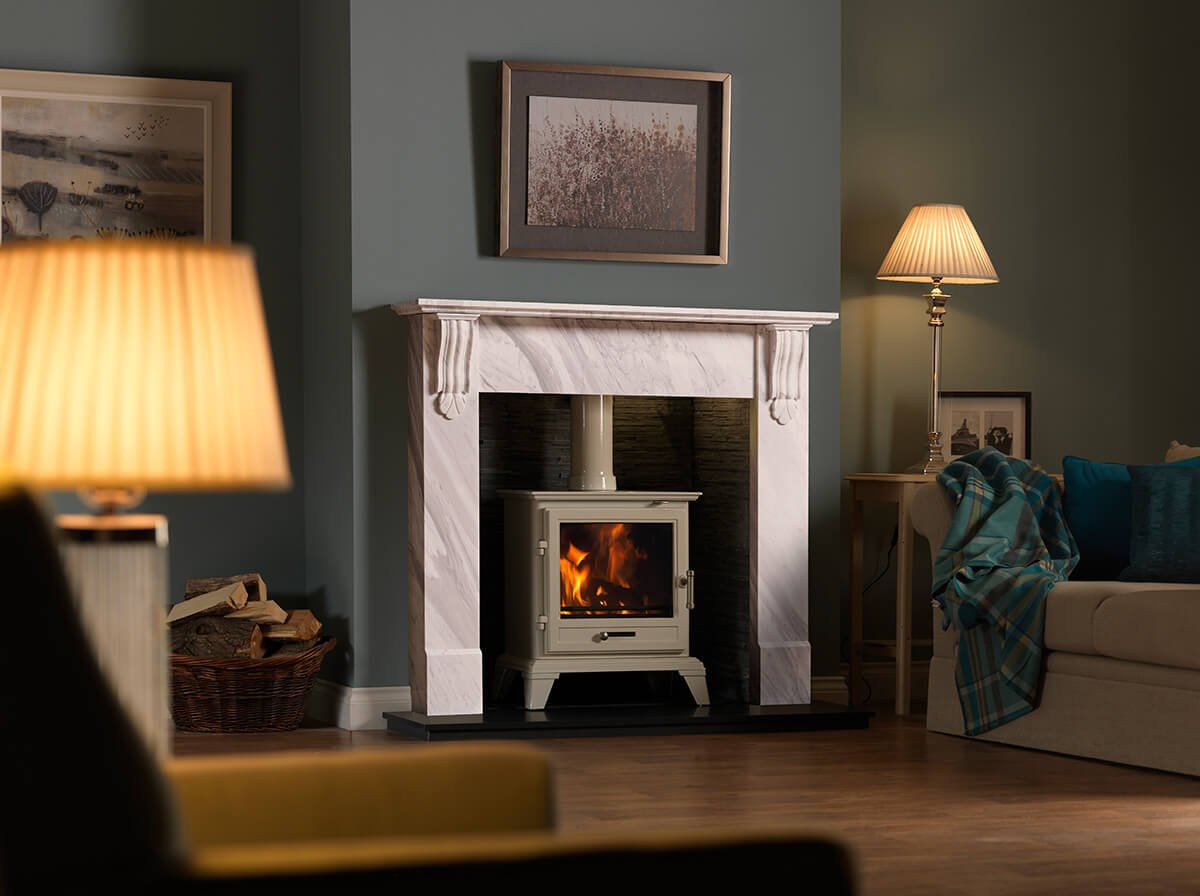
Build your perfect log burner installation quote here
